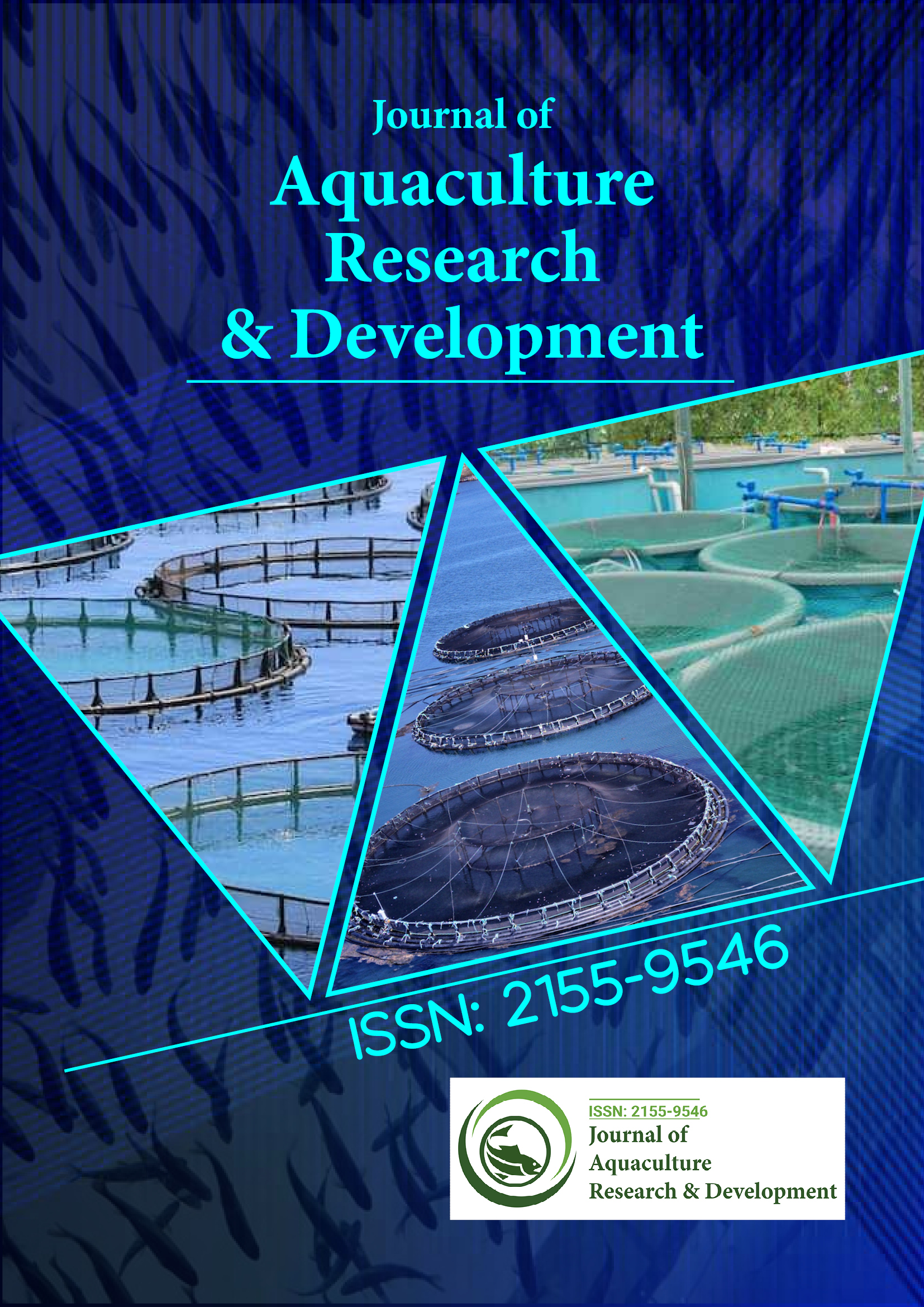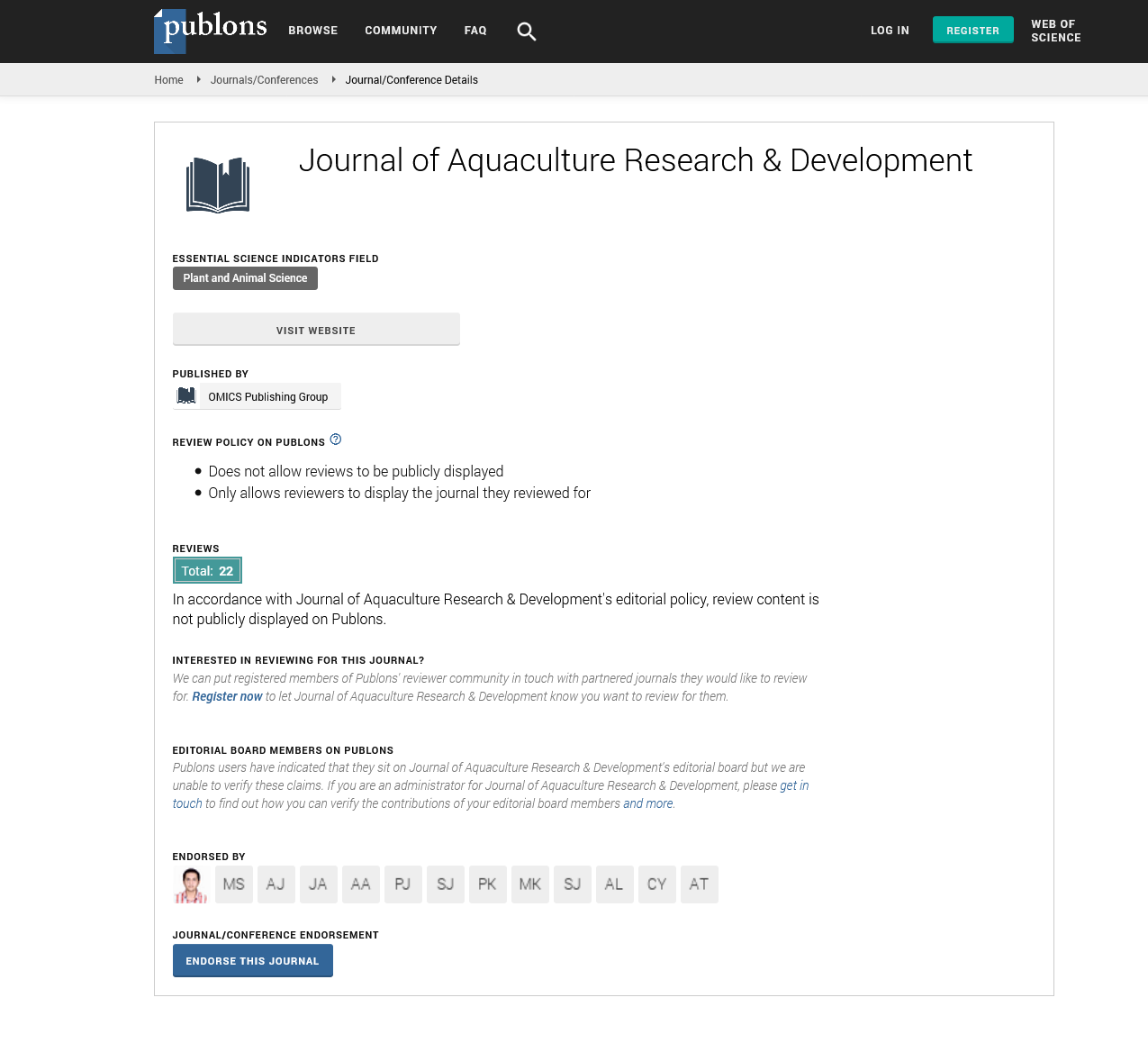Indexed In
- Online Access to Research in the Environment (OARE)
- Open J Gate
- Genamics JournalSeek
- JournalTOCs
- Scimago
- Ulrich's Periodicals Directory
- Access to Global Online Research in Agriculture (AGORA)
- Electronic Journals Library
- Centre for Agriculture and Biosciences International (CABI)
- RefSeek
- Directory of Research Journal Indexing (DRJI)
- Hamdard University
- EBSCO A-Z
- OCLC- WorldCat
- Scholarsteer
- SWB online catalog
- Virtual Library of Biology (vifabio)
- Publons
- MIAR
- University Grants Commission
- Euro Pub
- Google Scholar
Useful Links
Share This Page
Journal Flyer

Open Access Journals
- Agri and Aquaculture
- Biochemistry
- Bioinformatics & Systems Biology
- Business & Management
- Chemistry
- Clinical Sciences
- Engineering
- Food & Nutrition
- General Science
- Genetics & Molecular Biology
- Immunology & Microbiology
- Medical Sciences
- Neuroscience & Psychology
- Nursing & Health Care
- Pharmaceutical Sciences
Commentary - (2024) Volume 15, Issue 10
Benefits and Application of Marine Natural Products for Antifouling
Keding Canoe*Received: 25-Sep-2024, Manuscript No. JARD-24-27507; Editor assigned: 27-Sep-2024, Pre QC No. JARD-24-27507 (PQ); Reviewed: 11-Oct-2024, QC No. JARD-24-27507; Revised: 18-Oct-2024, Manuscript No. JARD-24-27507 (R); Published: 25-Oct-2024, DOI: 10.35248/2155-9546.24.15.920
Description
Biofouling, the accumulation of organisms such as bacteria, algae and barnacles on submerged surfaces, presents significant challenges in marine industries. This unwanted buildup occurs on ships, underwater structures, pipelines and aquaculture equipment, resulting in numerous economic and environmental issues. Increased drag, reduced fuel efficiency, structural degradation and invasive species transport are common outcomes of biofouling, necessitating effective control methods.
Historically, antifouling strategies have relied on chemical coatings, particularly those containing heavy metals like copper, which deter organisms from attaching. However, these solutions often harm marine ecosystems, releasing toxins that affect non-target species and contribute to pollution. Increasing awareness of these ecological impacts has spurred interest in alternative, eco-friendly approaches to biofouling management. Marine organisms, such as sponges, corals and algae, naturally produce compounds that inhibit biofouling on their surfaces. These natural products hold considerable potential for developing environmentally safe antifouling agents, as they can prevent biofouling without harming marine ecosystems.
Biofouling begins when microorganisms settle on surfaces submerged in water, forming biofilms that facilitate the attachment of larger organisms. These initial biofilms, primarily composed of bacteria and microalgae, create a conducive environment for macrofoulers, including barnacles, mussels and seaweed. Over time, this growth layer becomes thicker and more resistant to removal, making it increasingly challenging to manage. For ships, this leads to increased drag, necessitating higher fuel consumption to maintain speed. Studies estimate that biofouling can increase fuel consumption by as much as 40%, translating to higher operational costs and a larger carbon footprint for marine vessels.
In the aquaculture industry, biofouling clogs nets and reduces water flow, affecting the health and growth rates of farmed species. Moreover, biofouling organisms can carry pathogens and invasive species, further complicating marine biodiversity and health. Underwater infrastructure, such as oil platforms and pipelines, also faces accelerated degradation due to biofouling, necessitating frequent maintenance and replacement. These challenges underscore the need for effective and sustainable biofouling control solutions.
Traditional antifouling coatings often incorporate toxic biocides, particularly organotin compounds and copper-based agents that prevent organism attachment. While effective, these substances have long-lasting effects on marine life. Organotins, especially Tributyltin (TBT), were once widely used but were found to disrupt the reproductive systems of marine animals and accumulate in food chains, leading to widespread environmental harm. Recognizing these risks, the International Maritime Organization (IMO) introduced a global ban on organotin-based antifouling systems in 2008, prompting a shift toward safer alternatives.
Copper-based coatings have remained a popular choice, but they also pose risks, particularly in areas with heavy maritime traffic or aquaculture activities. Elevated copper levels can lead to toxicity in non-target species and over time, copper-resistant biofouling organisms may emerge. These environmental concerns have driven research into antifouling agents that do not rely on heavy metals or synthetic chemicals. The search for alternatives has led to natural antifouling compounds produced by marine organisms, which possess unique chemical properties to deter biofouling without causing ecological damage.
Marine organisms have evolved various defense mechanisms to avoid biofouling on their surfaces. Many marine species produce biochemical compounds that inhibit the settlement and growth of fouling organisms. Sponges, corals, algae and certain marine bacteria exhibit antifouling properties that prevent colonization by microbes and macroorganisms. These natural products have shown potential as environmentally safe antifouling agents, inspiring research into their properties and applications.
Terpenoids and alkaloids, organic compounds commonly found in marine sponges, algae and other invertebrates, have shown promising antifouling activity. Terpenoids are a large class of naturally occurring organic chemicals derived from five-carbon isoprene units and are known for their antimicrobial and antiinflammatory properties. Specific terpenoids inhibit bacterial adhesion and biofilm formation, which are key stages in biofouling development. For example, certain marine sponges produce terpenoids that disrupt bacterial cell walls, preventing bacteria from establishing biofilms on surfaces. Alkaloids, nitrogen-containing compounds found in various marine organisms, have also demonstrated antifouling effects. Some marine algae and soft corals produce alkaloids that interfere with the signaling pathways bacteria use to form biofilms. By targeting bacterial communication systems, these compounds reduce the adhesion of fouling organisms. The specificity and natural origins of terpenoids and alkaloids make them attractive candidates for eco-friendly antifouling coatings.
Citation: Canoe K (2024). Benefits and Application of Marine Natural Products for Antifouling. J Aquac Res Dev. 15:920.
Copyright: © 2024 Canoe K. This is an open-access article distributed under the terms of the Creative Commons Attribution License, which permits unrestricted use, distribution, and reproduction in any medium, provided the original author and source are credited.

